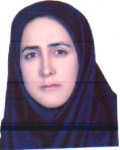| Authors | Ghasem Pahlevanpour, Hadis Bashiri |
|---|---|
| Journal | Journal of the Taiwan Institute of Chemical Engineers |
| Page number | 105159 |
| Volume number | 152 |
| IF | ثبت نشده |
| Paper Type | Full Paper |
| Published At | 2023-09-27 |
| Journal Grade | Scientific - research |
| Journal Type | Electronic |
| Journal Country | Iran, Islamic Republic Of |
| Journal Index | SCOPUS ,JCR |
Abstract
Background: In this study, H2 production from CH3OH/H2O mixture with Ni/TiO2 (0.5 wt%) photocatalyst by UV light radiation is investigated. Methods: Using the kinetic Monte Carlo (KMC) simulation, a mechanism for the H2 production reaction is obtained, and the rate coefficients are determined. Design of experiment is utilized to determine the optimum conditions of H2 production. Significant Findings: The perfect fitting of the simulation results and empirical data confirms the mechanism and rate constants. According to the results, the adsorption of CH3OH and water on the photocatalyst, and the recombination of hole and electron are the rate-determining steps of H2 production. Studying the effect of variables on H2 production using KMC simulation and response surface methodology shows Ni/TiO2 dosage is the most influential variable, and pH is not an influential variable on H2 production. In addition, the results of this study are compared with similar studies on other M/TiO2 (M = Pd, Pt, Au) photocatalysts and a high rate of H2 production in methanol–water mixtures on Ni/TiO2, compared to other M/TiO2 photocatalysts, is seen.
